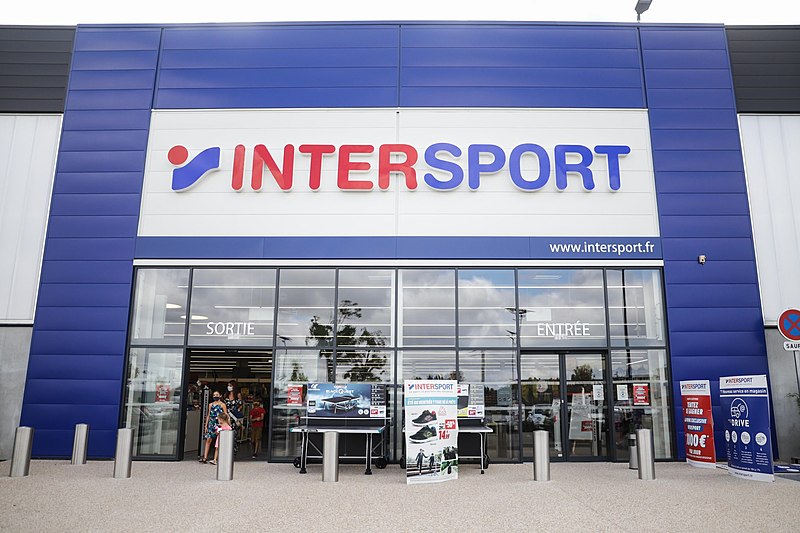The retail landscape is undergoing a significant transformation due to rapid shifts in consumer purchasing patterns. How can retailers maintain profitability, and relevance, and meet evolving customer demands? Within this article, I present instances of pioneering businesses that are adeptly managing this challenge.
In recent times, we’ve observed a substantial overhaul in the retail sector. Brick-and-mortar stores are grappling with sustaining sales, contending with narrow profit margins. This piece aims to delve into the evolution of global retail by spotlighting five forward-thinking companies that have all embraced novel technology, harnessing its potential to engage an ever-changing consumer base. The following five companies merit attention as we look ahead:
1. Walmart – The world’s largest retailer, now a dominant force in e-commerce.
2. Glossier – Employing social media to cultivate a beauty-centric community platform.
3. Alibaba – The premier e-commerce and retail entity, operating through marketplaces like Alibaba, Taobao, Tmall, and its renowned payment application, Alipay.
4. Intersport – The globe’s largest sporting goods retailer.
5. Casper – A mattress retailer designed to complement the digital shopping experience.
Each of these enterprises has contributed something distinctive to the retail realm. Their remarkable ability to scale and rapid innovation pace renders them particularly captivating subjects for future observation.
Walmart

Regarding Walmart, the company stands as the foremost global retailer, piloting novel approaches to engage evolving customer behaviors. Propelled by data and innovation, Walmart strives to provide customers with what they desire, wherever and whenever they desire it. An instance of their experimentation lies in the expansion of their “Delivery Unlimited” grocery delivery subscription program, accessible through approximately 1600 Walmart outlets across the US by the close of 2019.
“Walmart has typically adopted a cautious approach, gradually introducing digital options and subsequently investing more substantially in those that demonstrate traction. The introduction of a subscription-based delivery service not only enhances customer convenience but also holds the potential to cultivate greater customer loyalty and shopping frequency.”
In 2018, Walmart established a fresh partnership with Spark Delivery as part of its effort to construct its grocery delivery system. This delivery service focuses on the critical “last mile” delivery aspect. The operational concept resembles Uber, but instead of carrying passengers, drivers are dispatched to collect groceries for delivery. Drivers sign up when available, and upon receiving an order, they proceed to gather the groceries. Walmart adeptly tests novel concepts on a smaller scale before implementing large-scale solutions. This method permits them to gauge market response while minimizing costs. Successful concepts are then expanded. Another venture pursued by Walmart is AI technology, both for store associates and customers.
They’ve established an Intelligent Retail Lab within a physical Walmart store to develop AI tech and applications. While Walmart aims to grow its e-commerce sector, they continue to aggressively expand its in-store offerings. How can technology enhance the customer experience within Walmart stores? One example involves employing technology to monitor the availability of shopping carts at the entrance. If no carts are accessible, customers start their shopping experience on a negative note. Walmart seeks to enhance all facets of the customer journey, ensuring a positive impression regardless of the shopping channel.
Glossier

A beauty industry disruptor born from social media was founded by Emily Weiss in 2014. It swiftly transitioned from a beauty community platform to a direct-to-consumer sales channel. Leveraging social media’s potency, Glossier has prospered in e-commerce. By testing products and obtaining continuous customer feedback, Glossier refines its offerings, ultimately launching improved products. Their dedicated Instagram account serves as a testing ground, gauging market reactions before product release.
This business model has proven highly successful. Continuous content creation and engagement with customers play pivotal roles in attracting and retaining clientele. Their interactive approach also functions as a form of advertisement, further drawing in customers. Positioned as consumer advisors rather than just product peddlers, Glossier is genuinely customer-centric, adeptly transforming customer feedback into valuable market offerings.
Alibaba

The Chinese e-commerce titan relentlessly expands its “new retail” concept. While a prominent force in Asia, Alibaba hasn’t garnered the same Western attention as Amazon, for instance. As the premier e-commerce entity in China, Alibaba operates B2B, B2C, and C2C sales services via distinct web portals. Their approach doesn’t entail catering to everyone on a single platform; instead, they adopt a holistic viewpoint, tailoring distinct platforms for different target demographics. This strategy enables them to remain relevant and customize their offerings for various market segments.
Alibaba’s prominence as one of the world’s most influential companies stems primarily from its robust online presence. However, in recent years, they have made a notable foray into the realm of physical retail. Their venture, Hema, is a supermarket that revolves around the seamless integration of online and offline channels. The cornerstone of this approach lies in the extensive data amassed through digital footprints, primarily from smartphone usage. This data serves as the foundation for tailoring precise and targeted offerings to customers. Another distinguishing aspect of Alibaba’s success is its exceptional agility in piloting and innovating. They excel in testing new concepts and swiftly adapting based on market responses, focusing on delivering genuine customer value.
Alibaba’s achievements are also heavily influenced by its prowess in partnerships and acquisitions. This strategy has provided them with a competitive edge as they expand rapidly into new markets. A prime example is their acquisition of Ele. me in 2018, China’s leading delivery platform. This move aligned with their “new retail” initiative, leveraging Alibaba’s commerce infrastructure and diversifying business synergies to drive momentum, as noted by Alibaba’s Chief Executive Daniel Zhang. Beyond Ele. me, numerous strategic partnerships have bolstered their ascent.
Their acquisition of Cainiao Logistics has been pivotal in expanding their global delivery capabilities. To optimize efficiency for European deliveries, Alibaba has even established its warehouse in Belgium, aligned with their ambitious goal of achieving 72-hour delivery regardless of location. In a recent strategic partnership, Alibaba joined forces with Starbucks, aiming to transform China’s coffee industry.
Intersport

A Swiss-based omnichannel retailer has surged to become the world’s largest sports goods retailer. Their focus on digitization is evident through the words of Carsten Schmitz, Intersport’s Chief Digital Officer. Their strategy involves a holistic approach to processes, equipping retailers with tools to harness aggregated data for business success across all channels. Intersport’s digital experimentation within physical stores has been vital. Based on customer feedback and outcomes, they’ve introduced valuable tools like 3D foot analysis and tested innovations such as multi-sensory VR dressing rooms. Such innovative in-store experiences are pivotal in shaping the future of sports retailers, aligning with the trend toward e-commerce and the anticipated growth in the online retail sector.
Casper

A prominent mattress retailer has ingeniously woven experiential elements into their brick-and-mortar stores. Notably, they embarked on this path after initially establishing themselves as an online-only business. After experimenting with pop-up stores, Casper has transitioned to expanding permanent physical outlets, reflecting their recognition of the value of blending digital and physical retail experiences.
This illustrates the significance of striking a balance between online and offline presence, provided that strategic moves are made to stay ahead of consumer expectations. A case in point is Casper’s New York physical store, where customers can pay $25 for a 45-minute nap to make better-informed purchasing decisions. Casper’s bold plan to open more than 200 of its stores in the next three years underscores its commitment to expanding its physical footprint.
In conclusion, these five companies exemplify key facets of the upcoming generation of retail, which is poised to have an even broader impact in the years to come. Their successes attribute to various factors, and three vital lessons emerge for all to glean:
1. Forge Strategic Partnerships: Enhance your offerings by strategically collaborating with partners. Explore how your products or services can complement one another to elevate the end consumer’s overall experience.
2. Prioritize Piloting and Testing: The practice of piloting and testing is essential for comprehending consumer responses. This includes understanding what works, identifying areas for improvement, and gauging the feasibility of expansion.
3. Integrate Online and Offline: The convergence of online and offline realms is pivotal in the future of retail. While a substantial portion of future growth is anticipated to come from online purchases, customers also expect a physical presence that complements their virtual transactions. The notion that e-commerce is the sole route to growth is being challenged as many prosperous online retailers are diversifying into physical stores. It’s crucial to establish a connection between these experiences to truly embody customer-centricity.
In a world driven by advanced technology, it’s important to recognize our fundamental humanity and the value of the “human touch.” Those capable of seamlessly merging technology with authentic human interaction are poised to thrive in the years ahead.